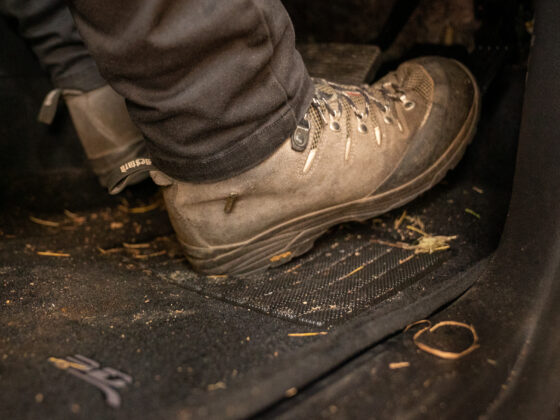You’ve no doubt heard the term ‘get out of gaol free card’ before. It’s a throw back to the game Monopoly and implies a card up your sleeve you can yank out to get yourself out of strife. Solo adventuring up in Cape York and find yourself bogged to the gills and sinking quick? Call up your get out of gaol free card. Grab your winch line. And have yourself back on solid ground before you know it.
But there’s a catch you see. That get out of gaol free card normally needs to include a qualifier word. Something like good, or sturdy, or reliable. Miss that part and your get out of gaol free card might be nothing more than a soggy #2 card when you need it most. So how do you ensure your winch will be there when you need it most. Luckily we’ve ruined more than a few winches; which means we’ve got more than a few tips to keep your winch fighting fit for years to come.
Keep it greased
Step one with any successful winch operation is having a winch that’ll actually turn when you need it to. Unless you’re running a VERY expensive winch, on one end you’ll have what’s known as a planetary gearbox. They work a little like a solar system (hence the name). With gears orbiting around other gears, and more gears in the middle. Alright that might not have been the best explanation. But there’s lots of gears, and all of them will seize up and fail if they’re not properly lubricated. It’s a safe bet a quality winch will be correctly greased, but cheaper, or older winches will be a mystery. If you’re feeling up for it there’s plenty of tutorials on how to grease your own winch, or your local 4X4 shop can help out with a winch service pretty easily.

Keep it clean
If you’re running synthetic winch line you’re picking up a whole bunch of benefits over steel cable. It’s lighter. Easier to use. Safer in the case of failure. And won’t leave you with metal barbs hanging out of your hand. The only downside is those high-tech fibres might be able to withstand a whole heap of load, they’re unfortunately pretty susceptible to mud and grit damaging the fibres. As the individual strands fray, the overall working ability of the line rapidly deteriorates. If it’s been a while (or ever) since you’ve washed your rope, or you’ve recently pointed your front end into a mud hole, set aside some time for cleaning. All you need is a bucket of warm soapy water, and just to slowly open up the rope like the image below, and give it a quick rinse out. It’ll add years to your winch rope’s life.

Keep it tight
It doesn’t take a catastrauphic failure to put your winch out of action. If your winch rope has been incorrectly spooled it can knot up causing all sorts of issues even when you’ve only spooled out a few metres. The issue comes down to the way the winch drum works. Each layer of rope acts like a foundation for the layer above. If the layers aren’t wound onto the drum tight enough the outer layers will tighten when load is placed on them, and they’ll dig in and bind up in the softer layers below. The result is your winch will spool in, then out, then in, then out, even while you’re holding the button in one direction. We’ve had it before where we’ve had to put both feet on the bull bar and pull with all our might to get the cable free.
To avoid your winch line turning into a winch knot head to the nearest sturdy tree and run your whole line out. Connect up to the tree (with a damper) and with your 4X4 in neutral start spooling your winch line in and keeping it tight. You should get a result that looks something similar to below. Keep your hands free, and run as much line onto the drum like this as possible. It’ll save you a lot of headache next time you need your winch.

Keep it dry
One end of your winch needs to be properly lubricated. The other, dry as a… well… something dry. Your winch’s 12V motor has a whole bunch of dissimilar metals inside it, add a little conductivity with some water and you’ll find your winch’s internals looking like a remnant of the Titanic. As the corrosion builds, the ability for it to function drops until finally nothing happens when you click the button. If you can, an external breather and a fully sealed winch motor (read: lots of silicone) will work best. Failing that, ensure the seals that are there are working, and there’s a drain hole to minimise the amount of water that’ll call your motor home permanently.

Keep it rust free
Think of electricity a little like water and it starts making a lot more sense. These external terminals are where the electricity needs to flow into and out of to make your motor work. Electricity needs a solid connection to actually get through though, there’s a reason we don’t use wood as wiring after all. Stands to reason then, that these corroded posts aren’t going to flow anywhere near the electricity they were designed to, and that means poor motor performance, if any.
If your posts are looking anything other than brand new undo the connections (after disconnecting them from the battery), clean as much rust off the posts as possible with a wire brush, replace the nuts, and give the whole ordeal a quick coat of an anti-corrosion paste. It’ll cost you a grand total of $15 and half an hours work and could save you binning that old winch prematurely.














